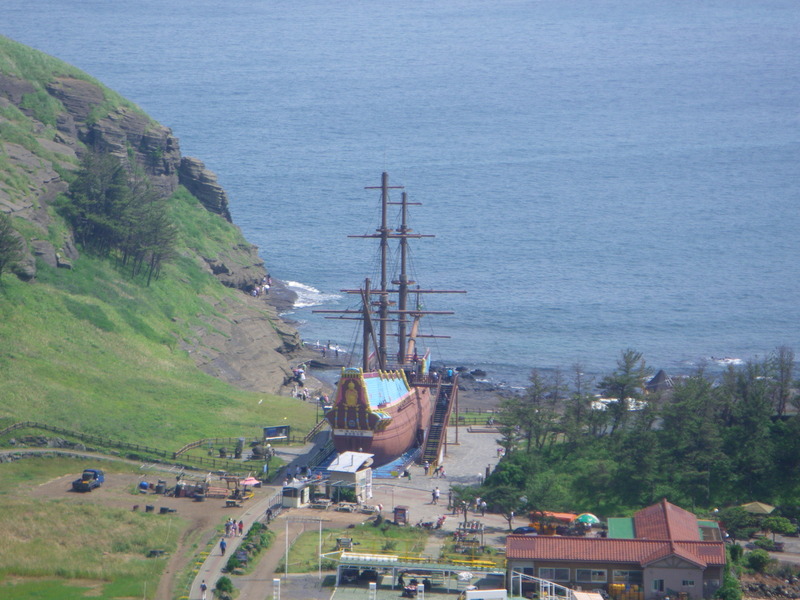
Once upon a time, Jeju had no people. Then, out of three holes in the ground, came three beautiful princes (or gods, or demigods). These three brothers were great hunters of pigs.
Eventually, a king on the mainland heard about the three brothers on Jeju. He had three daughters he could not find good husbands for, so he sent them to Jeju, together with gifts for the three princes, cattle and horses. The hoofprints of the first horse are still found on the shoreline of Jeju.
The three princes and the three princesses eventually gave rise to the three tribes of Jeju, which shared the island peacefully. Eventually, they joined to form the peaceful Tamna kingdom, which had international relations with China, Japan, and as far as Taiwan.
I don't know how much of this story is true, but I have seen the three holes in the ground myself:

They are preserved in a beautiful temple called Samseonghyeol, near downtown Jeju-city. Among other things, the temple shows an animated movie of the story -- I watched it in English, and I saw other people watch it in Japanese.
Outside the temple are some of the original Dolharubang, which I talked about yesterday. They were probably made around the year 1754.
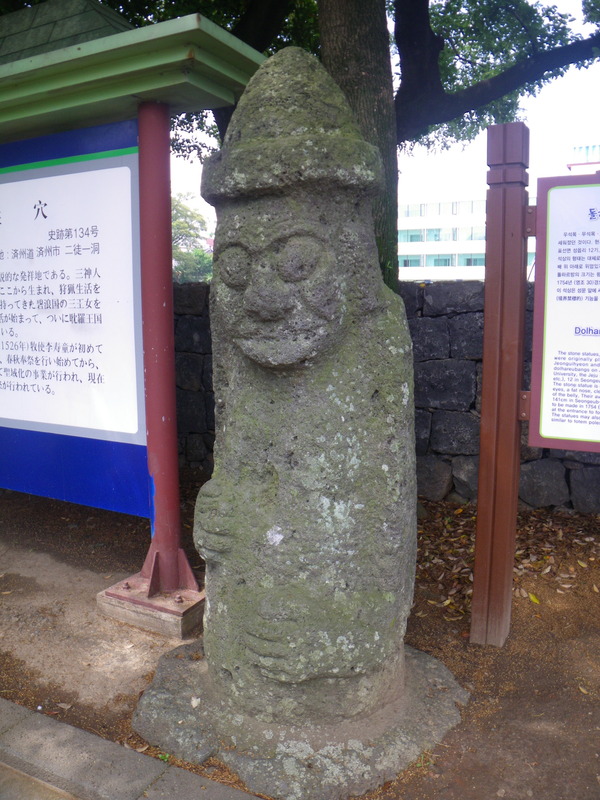
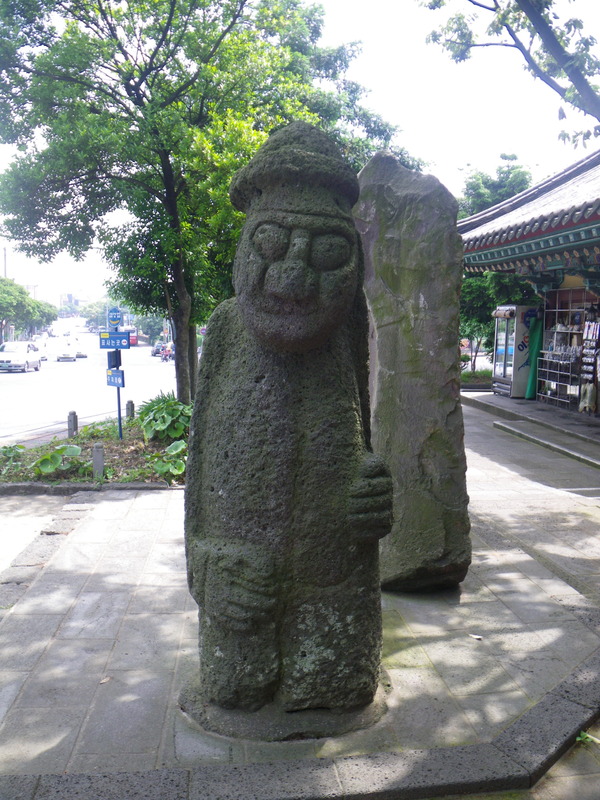


Next I went to a small mountain in the south of Jeju called Sanbangsan. Although it resembles Ilchulbong, this one was formed differently, as a lava dome.

I went partway up the mountain to visit a famous grotto with a statue of Buddha. The views along the way were quite beautiful.
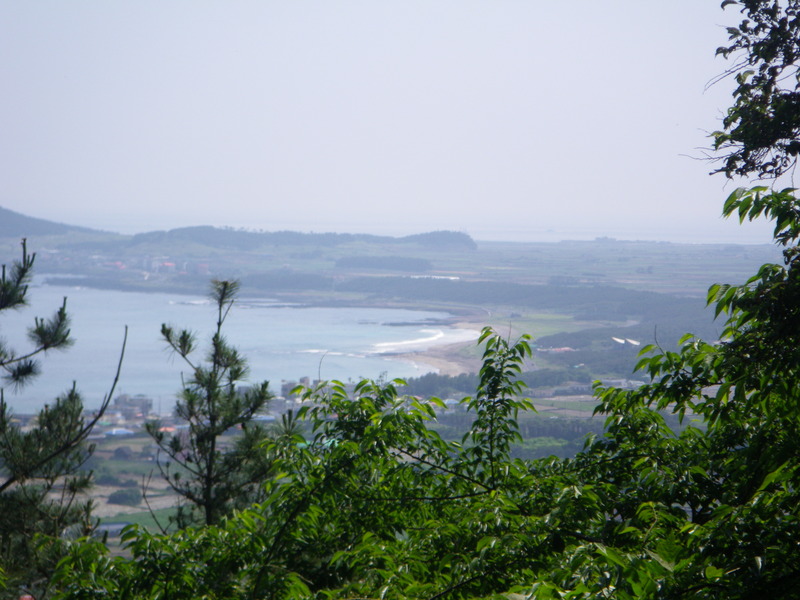


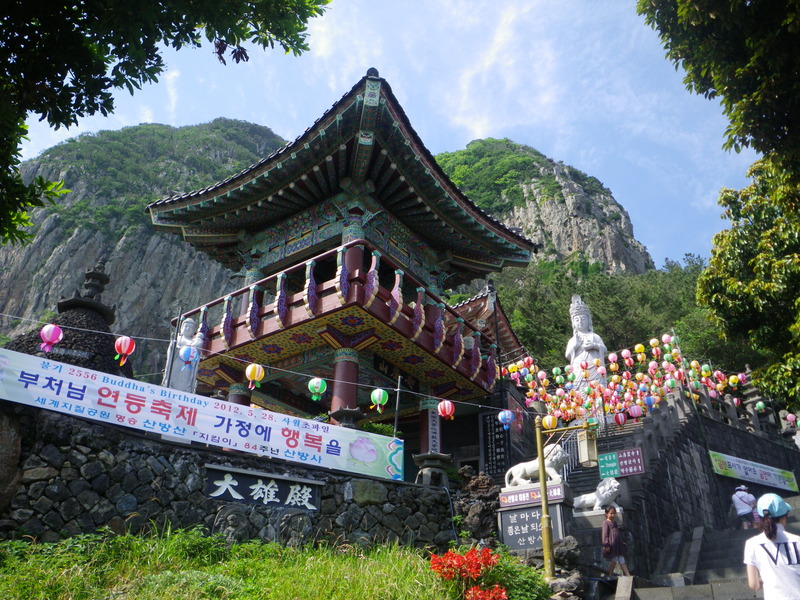
And I learned that May 28th is Buddha's birthday.
After that, I went down to the Yongmeori shoreline, which is also quite impressive.
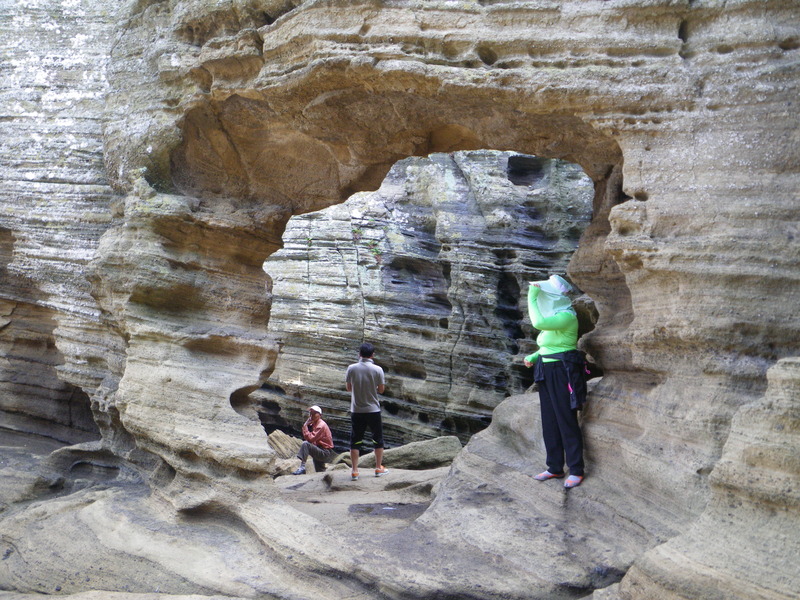


All along the shore, the diving women of Jeju were selling their catches.

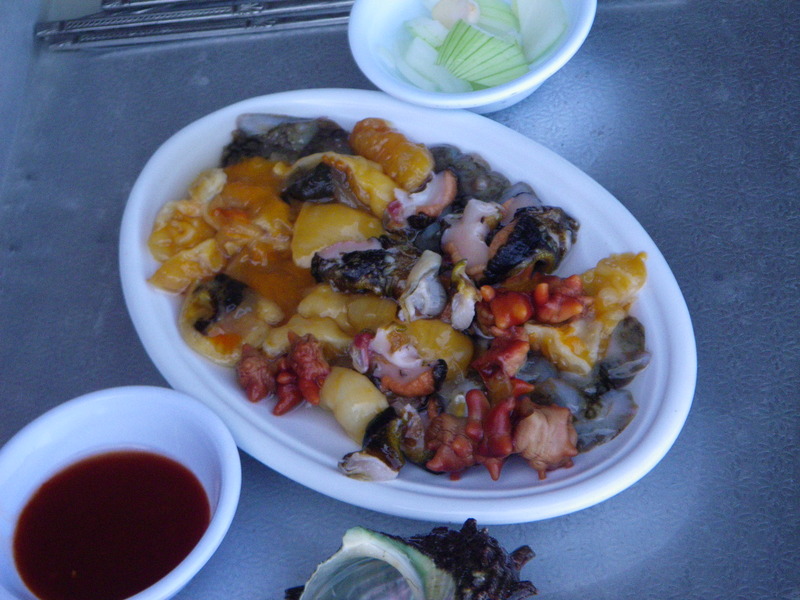
Obviously it was very fresh. A family offered me some, so I got to taste one of the shellfish. It was chewy but good.
In 1653, a dutch ship, the Sperwer, was shipwrecked in this area during a storm while traveling from Taiwan to Nagasaki. At the time, the Korean kingdom was closed to outsiders.
The 36 survivors of the shipwreck (of 64 crew) were prevented from leaving Korea, and punished when they did try, and kept more or less as "honored prisoners". Eventually, 13 years later, a group of 8 managed to steal a boat and head to Nagasaki, where they were kept in prison for another year before being able to return home. One of the eight, Hendrick Hamel, wrote the first account of Korea published in the west.
There is now a reproduction of the Sperwer on the shoreline of Jeju, near where the shipwreck occurred.
